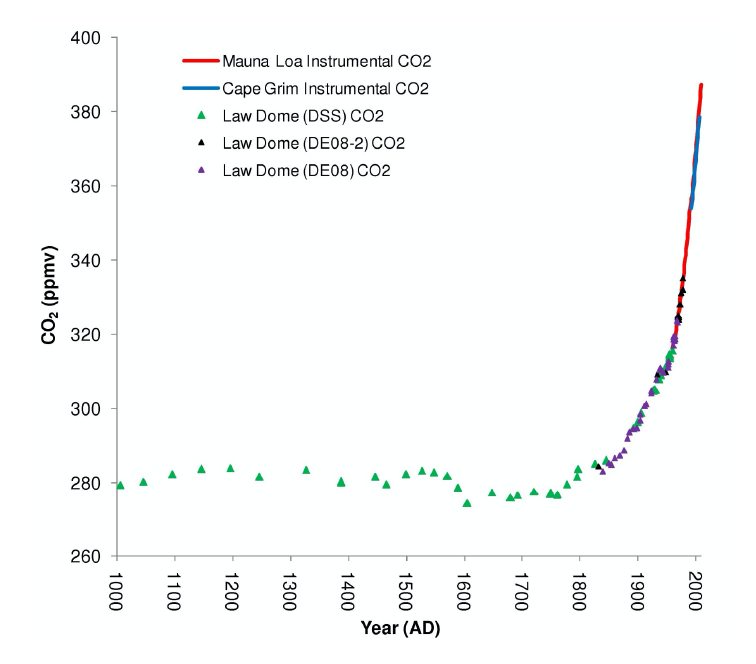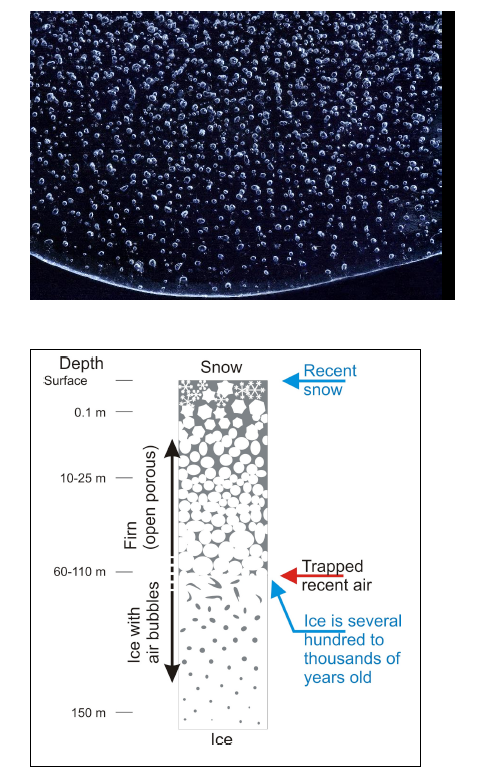How did we measure the levels of greenhouse gases in the past?
This is an important question because it underlies what we know about the rate and level of current greenhouse gas emissions.
A lot of what we know comes from ice cores. Ice cores are excellent recorders of atmospheric gases like CO2. In the figure below (Figure 1) you can see measurements of CO2 based on gases collected from the atmosphere by specially made instruments(red and blue lines).These instruments have been used to monitor atmospheric concentrations since 1950 and the measurements align extremely well with what the ice cores from Antarctica are telling us. Therefore, we’re confident about what the ice cores say about CO2 concentrations hundreds, and thousands of years ago.

And how do we get CO2 concentration from ice cores? Ice has little bubbles of air in it.
These bubbles of air trapped in the ice core record what gases were in the atmosphere at
that time. As the next year’s snow falls, the older snow gets compacted, but the air bubbles
are still there. This process continues year after year, decade after decade, century after
century and so on.
Then an ice core scientist comes along and drills an ice core (long cylinder of ice) to collect
information about past climate from the ice. They use a lot of fancy machines to first work
out how old the ice is at points all the way down the core. They then extract the gases from
the air bubbles in the ice to work out what the gases are, and the quantities of different
gases along the core – from the youngest ice at the top all the way back to the oldest ice at
the bottom of the core. This provides a picture of how greenhouse gases have changed over
time.

Figures supplied by Dr Tessa Vance, IMAS, UTas











